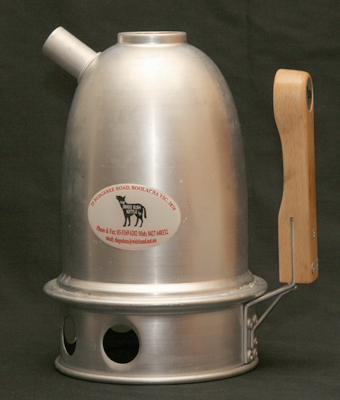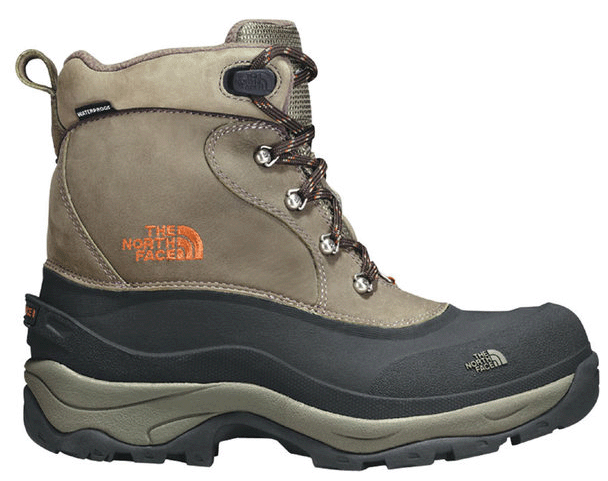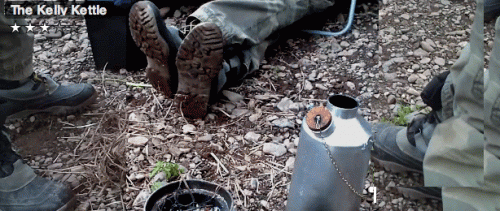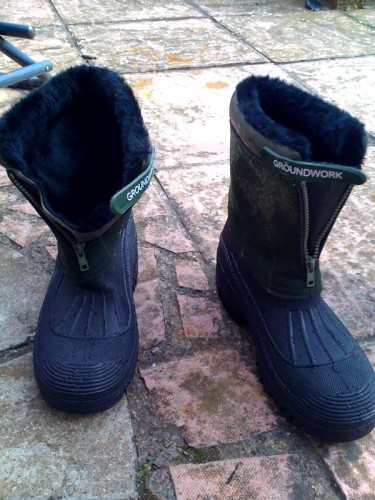This is another variation on the Kelly Kettle (Volcano Kettle), STORM Kettle (Eydon Kettle) and Ghillie Kettle: used in Australian bush camping the “Dingo Bush Kettle” look fantastic – slightly different to our northern hemisphere variations, this one has no separate fire base meaning you light a small fire on the ground directly beneath it, perhaps surrounded by a few rocks to limit any spread – this perhaps points to our different climates – lighting a fire direct on the invariably wet ground in the west coast of Ireland where the Kelly Kettle hails from isn’t going to work very well! It does however come with instead a small “metho tray” for liquid fuel cooking.
It looks very nice and the vertical handle would work very well for lifting off the flames and pouring. As a result of this kind of handle rather than the overhead ones of the Kelly/Eydon Kettles using it as a water carrier is not an option. The pouring spout is a lot narrower too, which is great for pouring, but not so good for re-filling. The capacity is 1.2 litres, so just a bit more than the smallest kelly kettle and enough for just 2 cups really, by the time you’ve spilled a bit! But still a great piece of gear and by all accounts a very authentic piece of Australian bushcraft gear – perfect for use with Australian-style swag camping! (See our swag stories for more on this great way to Get Out & Stay Out). We’ll see if we can get one imported and test it out here in our wetter, windier climate!

More info at http://www.bushkettle.com.au/ or Camping With Hill Billy.
For larger capacity, the Aussies have their “Eco Billy” kettle, more like a large Kelly Kettle, and also from that part of the world is the “Thermette” from New Zealand.




![Reblog this post [with Zemanta]](http://img.zemanta.com/reblog_e.png?x-id=38a1a53d-2892-44e2-b6cc-effe149c88eb)